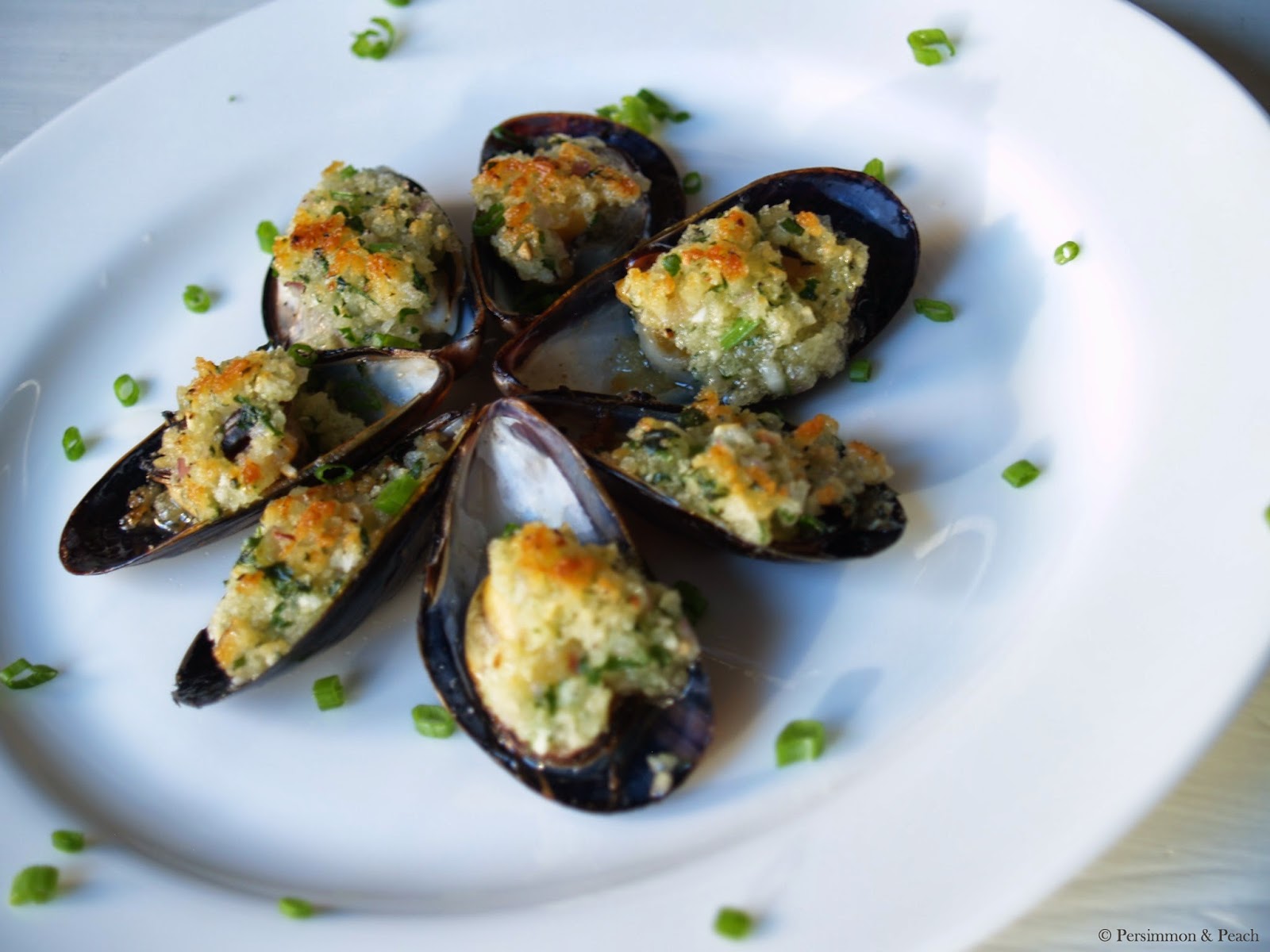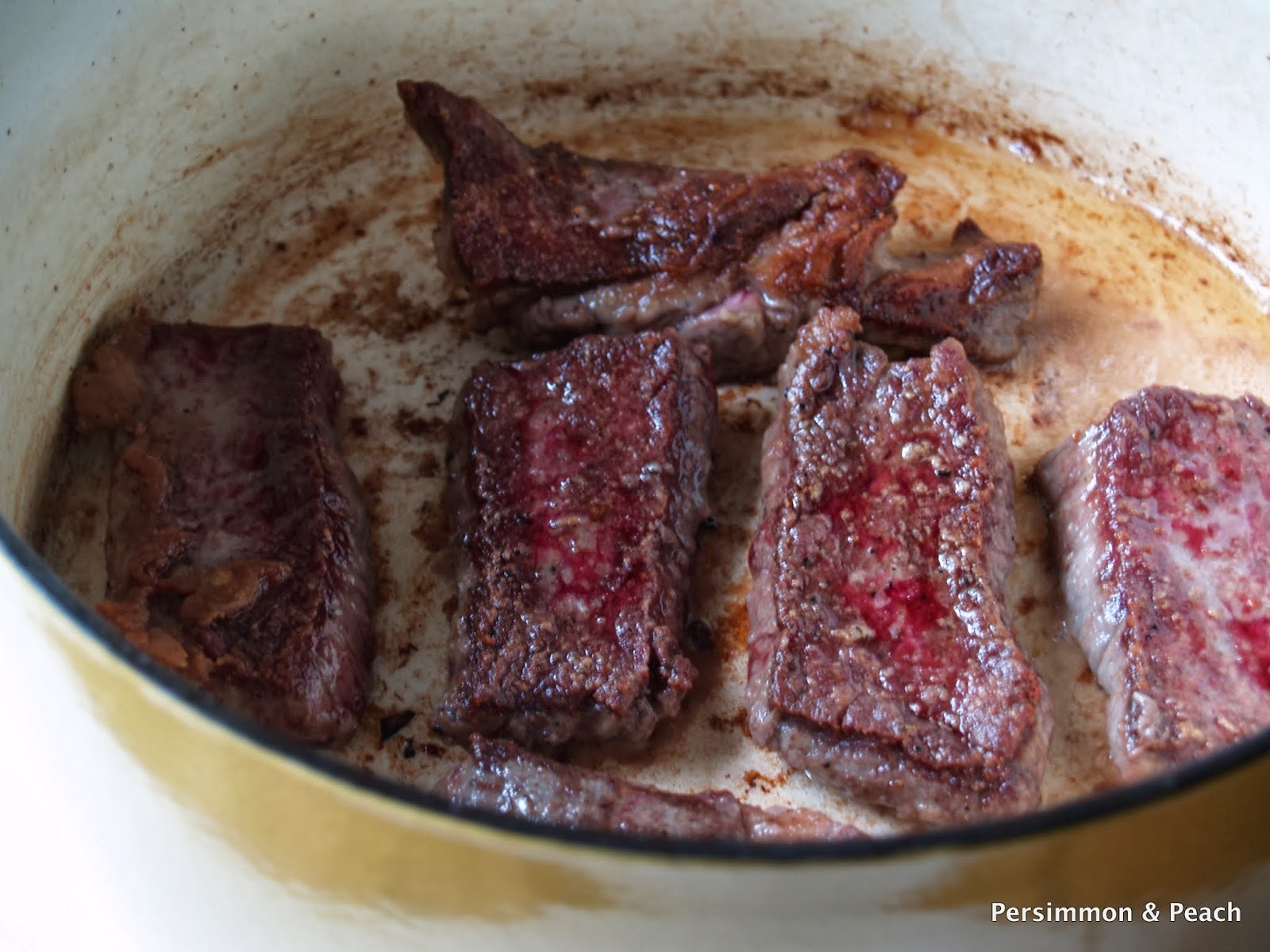I came across this recipe for mussels gratinéed, or moules à la provençale, in Julia Child's classic, Mastering the Art of French Cooking. I'd tagged the page a while back and saw it the other day when Aaron and I were in the mood for mussels. It's a nice alternative to steamed mussels; the buttery breadcrumb topping provides a contrasting texture and a satisfying crunch.
This is a great way to prepare mussels if you're serving a crowd, or even over pasta for a dinner of four. It's host-friendly in that you can steam the mussels, cover them with the breadcrumb topping, and refrigerate until your guests arrive. Simply place them under the broiler for 5 minutes and they're ready to be served.
Aaron and I had these for lunch last week and devoured them like vultures; I'm glad there was no one else around to witness our glutinous downfall. I swear there are few things better on earth than mussels dripping with butter, shallots, fresh herbs, and crispy breadcrumbs, especially when paired with a cool glass of dry white wine.
MUSSELS ON THE HALF SHELL, GRATINÉED
Yield: About 94 mussels
Ingredients:
For the Breadcrumb Topping
2 sticks (1/2 pound) unsalted butter, at room temperature
3 garlic cloves, minced
2 medium shallots, minced
1/4 cup chopped fresh parsley
1 cup panko breadcrumbs
Salt and freshly ground black pepper, to taste
For the Mussels
2 pounds mussels, scrubbed
1 tablespoon kosher salt
2 cups dry white wine
1 bay leaf
2 to 3 sprigs fresh flat-leaf parsley
2 tablespoons chopped chives, for garnish
For the Breadcrumb Topping
Using a wooden spoon, beat the butter in a medium bowl until it is light and creamy. Beat in the garlic, shallot, parsley, and breadcrumbs. Season to taste with salt and pepper. Cover with a sheet of plastic wrap and refrigerate until ready to use (alternatively, spoon the topping mixture into a pastry bag fitted with a 1/2-inch piping tip or a plastic zip-top bag cut with a 1/2-inch opening).
For the Mussels
Sort through the mussels and discard any that are not firmly closed. Using a paring knife, scrape off the "beard", if any, along the seam of the mussels. Place the mussels in a large bowl and sprinkle with the salt. Add enough cold water to cover, and allow the mussels to soak for 20 minutes. Drain the mussels. If any sand remains at the bottom of the bowl, soak them again. Repeat until no more sand remains.
Combine the wine, bay leaf, and parsley sprigs in a large pot. Bring the wine to a boil for 2 minutes. Add the cleaned, drained mussels, cover the pot and give it a good shake. Let the mussels cook for 3 minutes, or until they just begin to open. Remove the pot from the heat and allow the mussels to cool slightly.
Preheat the broiler. Discard the empty shell halves and arrange the mussels on an aluminum foil-lined sheet pan. Pipe or spoon 1 teaspoon of the topping mixture onto each of the mussel halves. Place the mussels under the broiler for about 5 minutes, or until the butter has melted and the bread crumbs are lightly browned. Sprinkle the mussels with the chives and serve immediately.

































